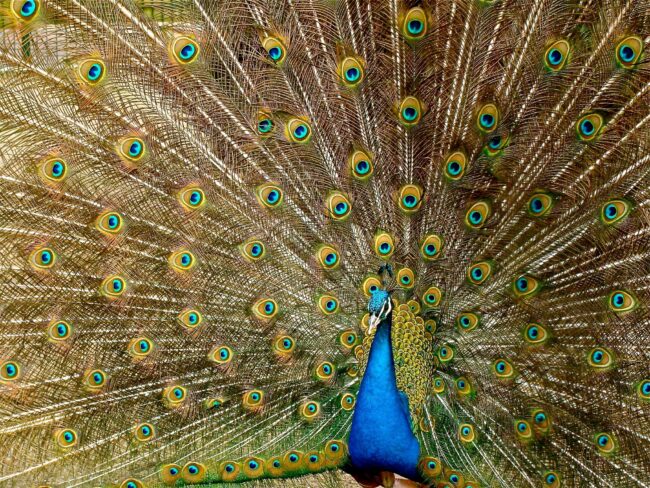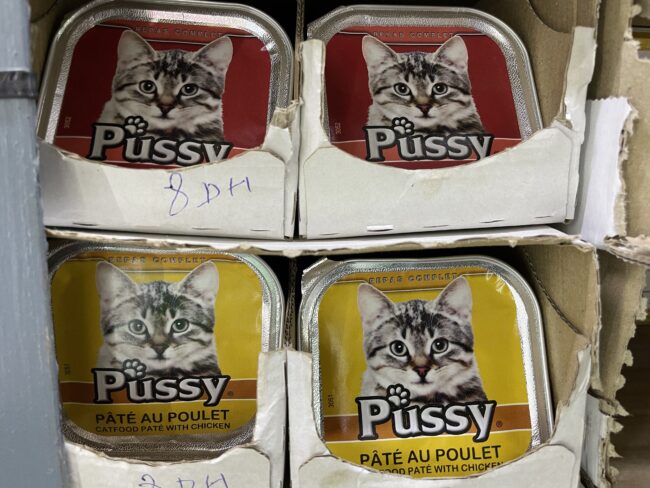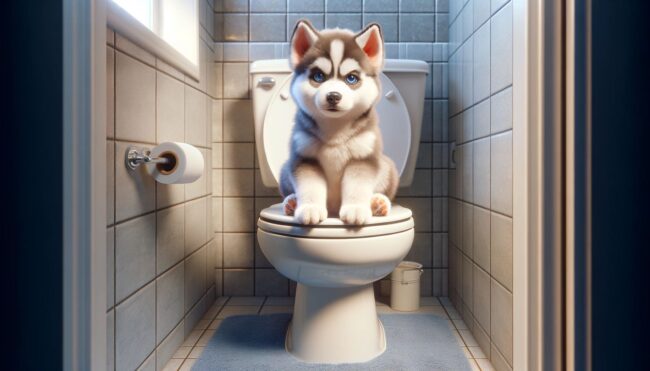Animals are an integral part of our lives, so it’s important to be able to talk about them in whatever language you’re learning! As we delve into the names of animals in French, we’ll uncover some linguistic nuances, cultural similarities and differences, and the rich variety of the French language.
Before we begin learning new vocabulary, let’s take a moment to discuss a few important grammar points. First, some animals have multiple names in French. This can be due to region, context, or biological gender of the animal. And remember that, like many other words in French, the gender of an animal’s name in French may not always correspond to the animal’s gender.
The cat’s out of the bag now – let’s dive in!
This article is brought to you by LingoCulture, Where you can get unlimited private French classes via Zoom with native teachers for a flat monthly rate. It’s the closest thing to immersion you can get without living in a French-speaking country. Click here to learn more.
Farm animals in French
Farm animals can be found all over the world, including in French-speaking countries! These animals have important roles on the farm, from providing food like milk and eggs, to providing wool or fur for clothing, to providing labor like pulling carts or plowing fields.
French animals on farms produce the necessary milk for the country’s extensive consumption of butter and cheese: the average French citizen consumes 15 pounds of butter and 55 pounds of cheese every year!
| Cow | La vache |
| Pig | Le cochon, La truie |
| Sheep | Le mouton |
| Chicken | Le coq, La poule |
| Horse | Le cheval |
| Goat | La chèvre |
| Duck | Le canard, La cane |
| Turkey | Le dindon, La dinde |
| Donkey | L’âne (m.) |
| Goose | L’oie (f.) |
| Llama | Le lama |
| Alpaca | L’alpaga (m.) |
Note that the French animal names we’ve listed here are for the animals themselves. When talking about the meat of these farm animals French has other terms, just like in English with “beef” and “ham.”
Marine animals in French
Earth’s oceans and seas are home to a wide variety of creatures. Some of these animals live in the depths, others in the shallow coastal waters of each continent, and some in fresh water. Famous French oceanographer Jacques Cousteau certainly encountered some of these beings in his explorations of the deep – let’s discover the French animals that live beneath the waves!
| Dolphin | Le dauphin |
| Shark | Le requin |
| Octopus | Le poulpe, La pieuvre |
| Sea turtle | La tortue de mer, La tortue marine |
| Seahorse | L’hippocampe (m.) |
| Jellyfish | La méduse |
| Lobster | Le homard |
| Crab | Le crabe, Le tourteau |
| Whale | La baleine, Le rorqual |
| Seal | Le phoque |
| Swordfish | L’espadon (m.) |
| Salmon | Le saumon |
| Tuna | Le thon |
| Shrimp | La crevette |
Birds in French
Birds fly all over the world, sometimes migrating between regions. There are over 10,000 species of birds, but of course we won’t learn all of these names! We’ll focus on the most common and most well-known species of birds you might want to talk about. Interestingly, the national animal of France is a bird, but we’ve already learned the name: le coq!
| Sparrow | Le moineau, Le piaf |
| Lark | L’alouette (f.) |
| Eagle, Bald eagle | L’aigle (m.), Le pyrargue à tête blanche |
| Penguin | Le manchot, Le pingouin |
| Parrot | Le perroquet |
| Owl | Le hibou, La chouette |
| Swan | Le cygne |
| Flamingo | Le flamant, Le flamant rose |
| Peacock | Le paon |
| Hummingbird | Le colibri, L’oiseau-mouche (m.) |
| Pigeon | Le pigeon |
| Seagull | Le goeland, La mouette |
| Crow | La corneille |
| Ostrich | L’autruche (f.) |
| Hawk | Le faucon |
| Robin | Le rouge-gorge, Le merle américain |

Reptiles and Amphibians in French
We’ll now turn to learning the names of reptiles and amphibians in French. Generally, reptiles are dry and scaly and live on land, whereas amphibians have moist skin and can live in water and on land. In the French-speaking world, you’ll find the widest variety of reptiles and amphibians in French Guiana (South America) and Madagascar (Africa)!
| Frog | La grenouille |
| Toad | Le crapaud |
| Gecko | Le gecko |
| Newt | Le triton |
| Salamander | La salamandre |
| Bearded dragon | Le lézard à barbe, Le pogona |
| Komodo dragon | Le dragon de Komodo |
| Iguana | L’iguane (m.) |
| Crocodile | Le crocodile |
| Alligator | L’alligator (m.) |
| Chameleon | Le caméléon |
| Boa constrictor | Le boa constricteur |
| Anaconda | L’anaconda (m.) |
| Python | Le python |
Domestic animals in French
Domestic animals, usually thought of as pets, are common in most countries. Interactions between humans and pets can vary by country, but overall we tend to keep the same types of pets no matter where we live.
Fun fact: in European countries, including France, Belgium, and Switzerland, you can get a passport for your pet so they can travel with you within the European Union!
| Dog | Le chien, La chienne |
| Cat | Le chat, La chatte |
| Rabbit | Le lapin |
| Hamster | Le hamster |
| Guinea pig | Le cochon d’Inde |
| Parakeet | La perruche |
| Goldfish | Le poisson rouge |
| Turtle | La tortue |
| Ferret | Le furet |
| Snake | Le serpent |
| Gerbil | La gerbille |
| Lizard | Le lézard |
| Chinchilla | Le chinchilla |
| Rat | Le rat |

Wild animals in French
Depending on where you live, the wild animals in your region will vary. In this section, we’ll talk about wild animals that are found across the globe.
From animals found in the African plains to European forests, there is a wide range of species you might encounter in the wild. It is important to note, however, that you might find the same types of wild animals in similar climates. For example, deer are common in both France and Canada, whereas wolves and bears can be found on every continent!
| Lion | Le lion |
| Tiger | Le tigre |
| Giraffe | La girafe |
| Elephant | L’éléphant (m.) |
| Zebra | Le zèbre |
| Bear | L’ours (m.) |
| Wolf | Le loup |
| Monkey | Le singe |
| Rhinoceros | Le rhinocéros |
| Kangaroo | Le kangourou |
| Cheetah | Le guépard |
| Gorilla | Le gorille |
| Leopard | Le léopard |
| Hippopotamus | L’hippopotame (m.) |
| Panda | Le panda |
| Platypus | L’ornithorynque (m.) |
| Beaver | Le castor |
| Sloth | Le paresseux |
| Deer | Le cerf, La biche |
| Moose | L’orignal (m.) |
| Fox | Le renard |
| Squirrel | L’écureuil (m.) |
| Hedgehog | Le hérisson |
| Raccoon | Le raton laveur |
| Bat | La chauve-souris |

Baby animals in French
All animals begin life as babies! In this section, we’ll explore the names for the young versions of animals in French. Just as these baby animals themselves, the French names are cute and playful. For certain animals, their baby names end in the diminutive suffixes -et, -ette, or -on, signaling something small, young, or cute.
| Kitten | Le chaton |
| Puppy | Le chiot |
| Bear cub | L’ourson (m.) |
| Foal | Le poulain |
| Calf | Le veau |
| Fawn | Le faon |
| Piglet | Le porcelet, Le cochonnet |
| Chick | Le poussin, La poulette |
| Duckling | Le caneton |
| Bunny | La lapinette |
Note that the genders of these baby animals in French are invariable, regardless of the biological gender of the individuals themselves. So although some learners may want to apply the same rules as for the adults, for example with un chat and une chatte, or un chien and une chienne, we can’t do that with un chaton or un chiot.
In fact, une chiotte is something completely different, derived from the French word for the verb to shit or to crap: chier. Une chiotte is a shitter or a crapper. You will definitely amuse your French friends if you use this word to refer to a female puppy!

Mythological creatures and animals in French
To wrap up this post about French animals, let’s turn now to our favorite mythological creatures and animals. Some of these entries are strictly animal, while others are animal-human hybrids; we won’t touch on humanoids like vampires here (with the exception of werewolves). Many of these creatures appear in mythologies around the French-speaking world in various forms!
| Unicorn | La licorne |
| Dragon | Le dragon |
| Mermaid | La sirène |
| Griffin | Le griffon |
| Phoenix | Le phénix |
| Centaur | Le centaure |
| Werewolf | Le loup-garou |
| Kraken | Le kraken |
| Pegasus | Le pégase |
| Gargoyle | La gargouille |
| Basilisk | Le basilic |
| Sphinx | Le sphinx |
Conclusion
From the charming farm animals that graze in the countryside to the majestic marine animals that swim the seven seas, we’ve covered an array of French animals in this vocabulary post.
The enchanting melodies of birdsong, the slithering amphibians and reptiles that roam the land and water, the beloved pets that we cherish, the untamed wildness of undomesticated animals, the endearing baby animals that we adore, and even the mythical creatures that ignite our imagination… all have their place in our French animal vocabulary.
This broad overview of the essential vocab for each category of animals in French will enrich your use of the language and promote conversations about the wondrous creatures that surround us!